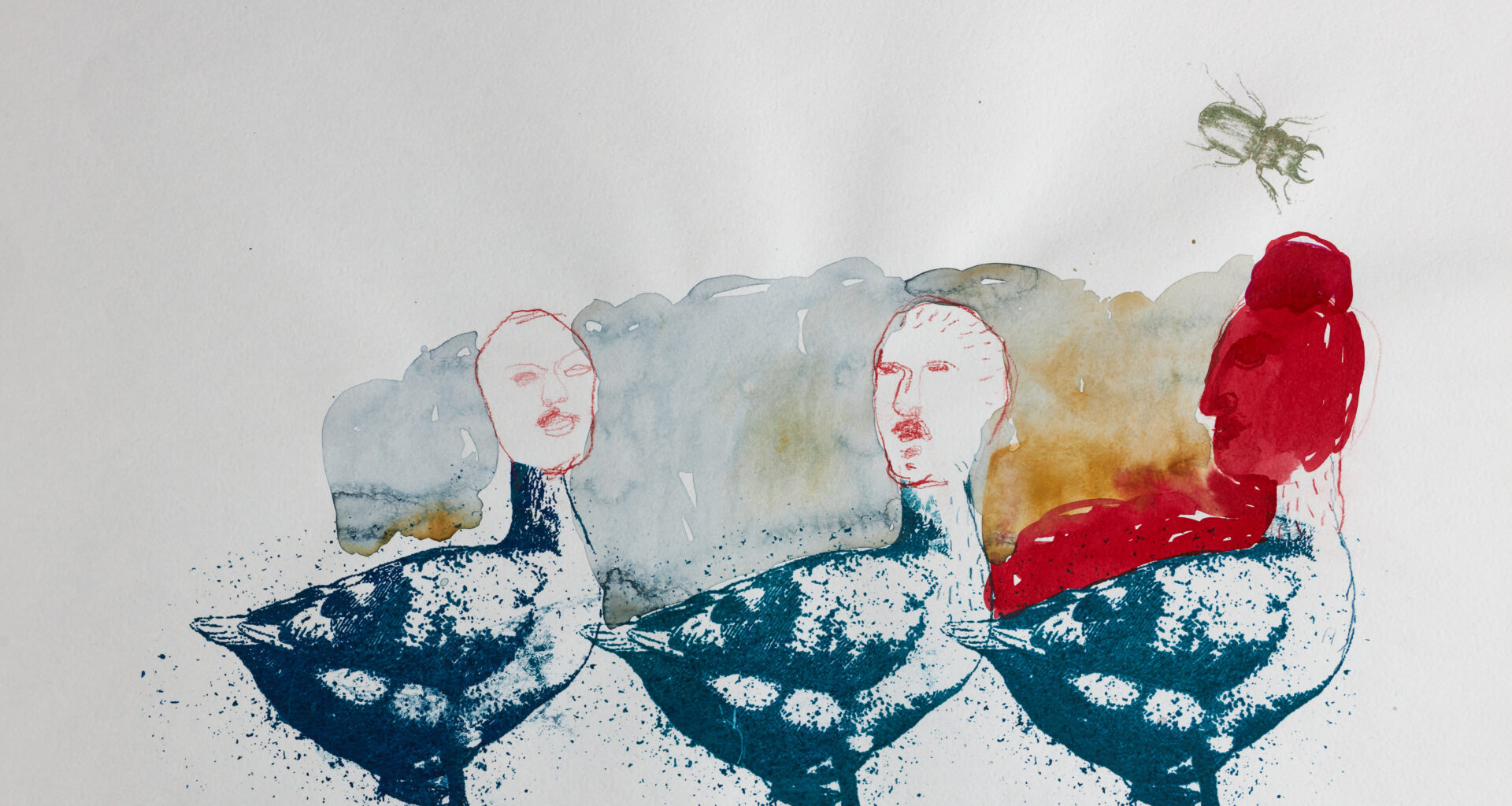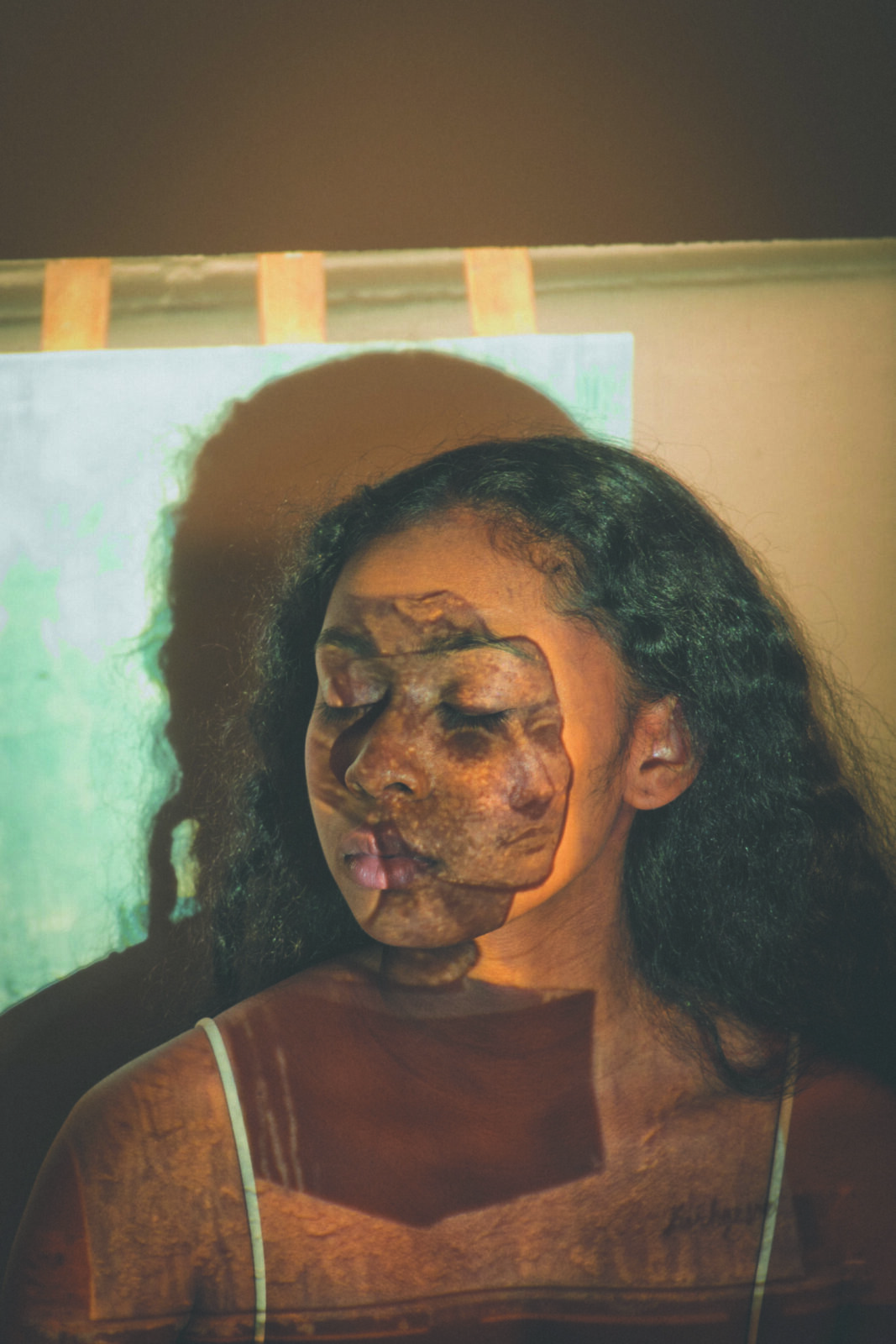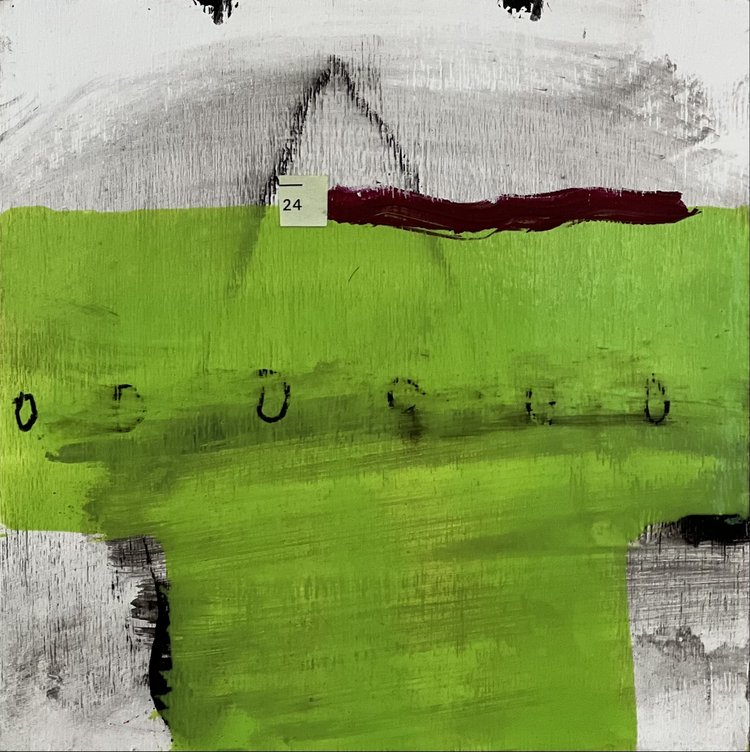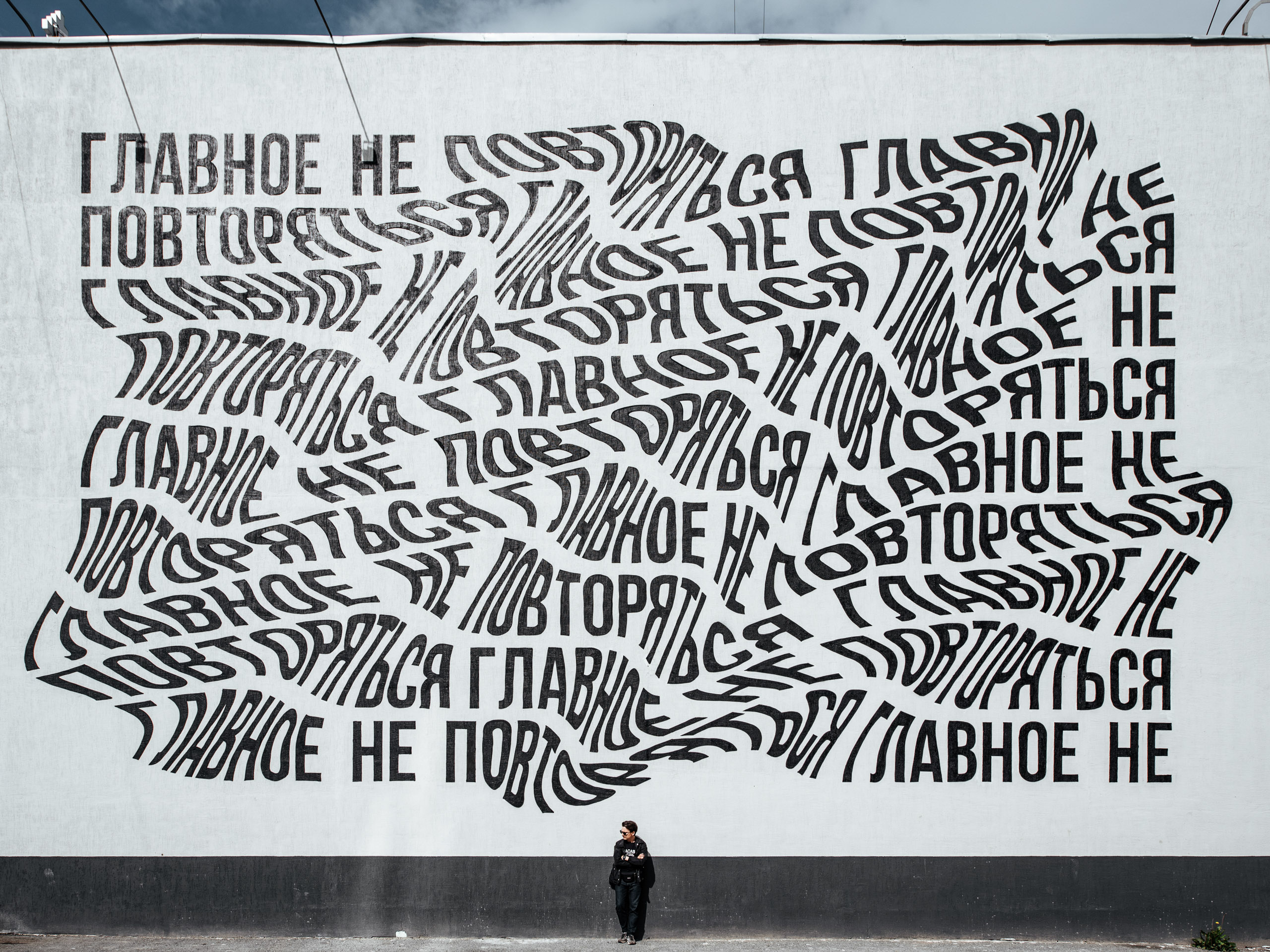Natalia Spechinskaya is an artist who was born into a creative Leningrad family with a considerable artistic heritage and managed to develop her talent despite a non-linear creative path. In the interview we discussed the symbiosis of the familiar and the new in Natalia’s paintings, the influence of environment on the artist’s development and the role of the concept in the creation of a work.
Natalia, you were born into a creative family with an outstanding artistic heritage. Did you follow in your family’s footsteps in art?
I don’t think that my genes and “ancestral heritage” have much significance in relation to my works, although it is possible, no one knows the percentage ratio of heredity to all other constituent derivatives of personality. Most of my classmates at the LSHS (School of the Academy of Arts) had parents who were artists, unlike me. Nevertheless, some relatives certainly had some relation to art: my grandmother, the wife of Vsevolod Vishnevsky’s son, invented and designed puppets at the Bolshoi Puppet Theater on Nekrasov Street in St. Petersburg (there are her puppets there to this day), my aunt worked as a theater artist, my uncle was a painter. In general, you can, of course, pick up some creative grits, but I don’t think that this conventional heredity has any serious significance.
When I was growing up, it was fashionable to send children to music and art schools. And since I apparently had some ability, at the age of five I was given to Olga Nekrasova’s studio at the Hermitage. At the age of 11 I entered the art school at the Repin Academy of Arts, where I happily studied until the 11th grade. And I don’t know how to take into account the merits of famous relatives.
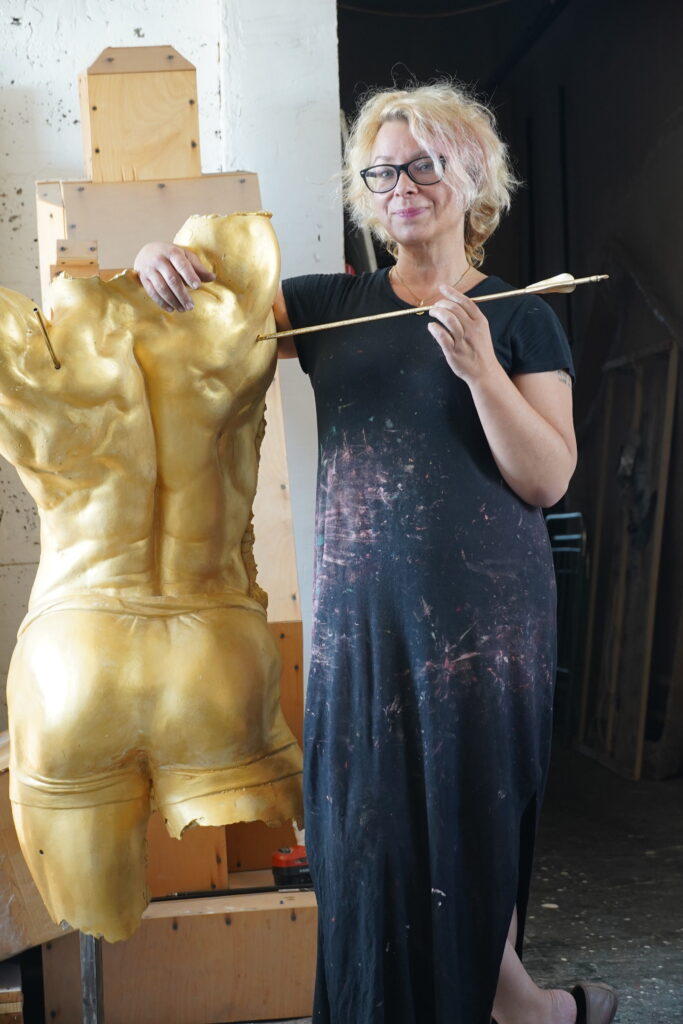
At what point did you decide that you would become an artist? How did your professional path in art begin?
Yes, I liked to draw as a child. And then what? A lot of people liked to draw. It doesn’t have to be a direct talent, beliefs and a general, so to speak, formed path. Of course, you could make up a beautiful story that I’m soaked in these creative genes, and the road did not lead me anywhere, except for art. But no, it didn’t. I’ve had some pretty big breaks in my creative endeavors. I went abroad and didn’t finish the Academy of Arts. As a result, I graduated from Herzen in painting: I wanted to earn money, so I went to correspondence school, and it was only there. Then there was another break: my second husband was a sculptor and a businessman-restaurateur. He opened several establishments and asked me to help him in the business. From absolute scratch, with no experience or knowledge of the industry, I found myself immersed for several years in this restaurant story. It wasn’t until a few years later, despite the success, due to certain circumstances, thank God, that I decided to call it quits and get back into the art. I decided to dig out talent and education. That’s when my professional journey began.
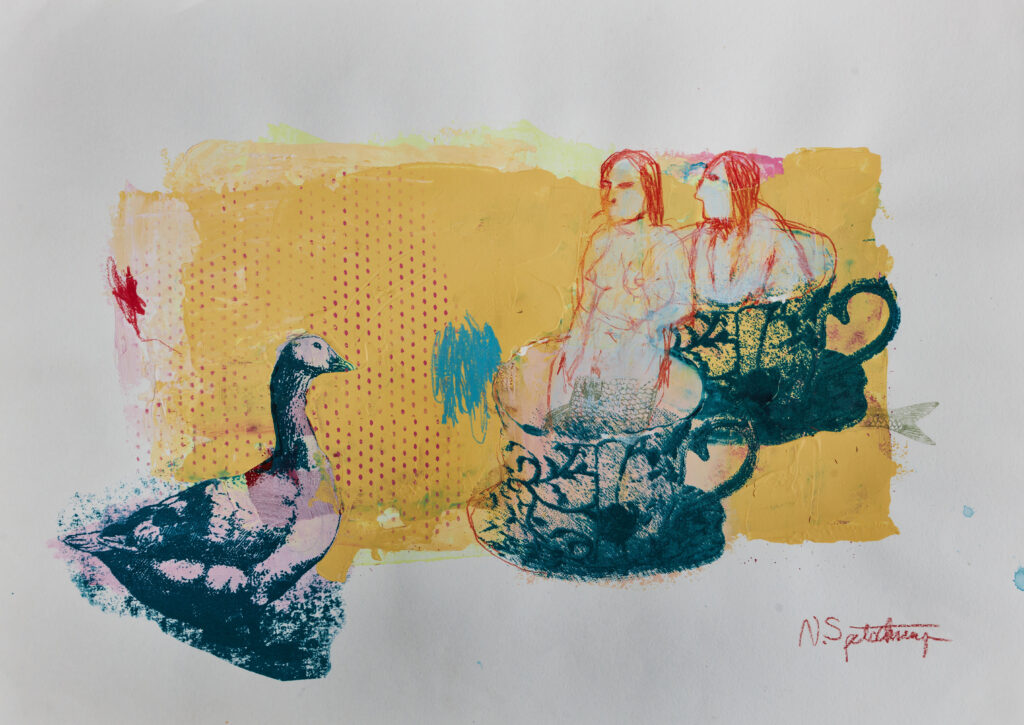
In your works you often refer to the heritage of European art, giving a modern sound to familiar motifs: classical images can be found surrounded by the most curious things – a fish, a grasshopper, a cigarette or a pink goose. How was this symbiosis born?
The symbiosis of the old and the new was expressed to the maximum in the project “Integration”, exhibited at the Shchusev Museum of Architecture in Moscow in 21. It declared the idea that everything that we, living artists, are producing at the moment is possible only thanks to the existing chain of events in history and in art history in particular, so it is impossible and pointless to try to separate ourselves from it As for geese and beetles… Of course, they are symbols of something. In all my projects, seemingly unrelated to each other, there are periodically the same characters, transitional images, in some works passphrases from previous projects or, on the contrary, addressed to the future. All my works, no matter what projects they belong to, are connected, as if they were one family. All the images have a certain meaning for me. There are oddities out there, and I’ll say it again, I’m a terrible fan of obvious subjects: he’s gone, he’s on a horse, he’s galloping over there. I like art where you have to think for yourself. The first impression of a work of art, no matter how much conceptual artists will stigmatize me, is born on the level of emotions and feelings. That’s why I don’t like texts for works of art. They sometimes kill the work itself by being better than it. Imagine you can’t read or don’t know the language in which the text is written: you have to be content with your own impression. A good work of art is quite self-sufficient. You will understand exactly what you need to understand.
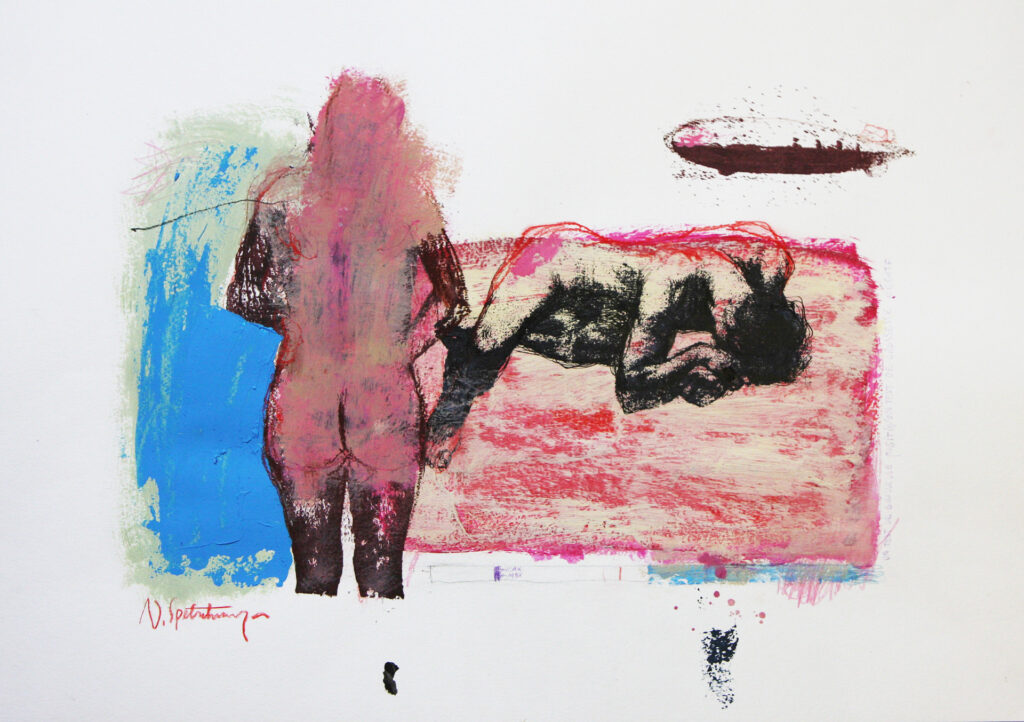
Is the atmosphere of the place where an artist creates his work important to him? Where is your studio located?
My studio has been located in the art cluster “Open Studio Nepokoronye-17” since 2016. This space is a residency where resident artists are not bound by common creative tasks, but are united only by location and perhaps friendship. I am very grateful to Unconquered. I think that most artists who are residents of “Nepokoronennye” get an invaluable benefit from this space: in addition to getting to know other artists, often very successful and well-known, and exchanging workshop information, here you have a much better chance of being noticed by gallerists, curators, and collectors. It’s not easy for a young artist to lure them in with a separate studio, but here they come to see a space unique in St. Petersburg with studios of a dozen completely different artists.
Despite the lack of obvious creative connection between the residents, of course, “Open Studio Nepokoronye-17” also promotes creative growth. We exchange opinions, share information, and discuss art. We’re like a strange family. Location is important for the artist.
What are your feelings about St. Petersburg’s art community?
I don’t go to vernissages and exhibition openings very often, where everyone usually “hangs out”. I try to go to things that interest me, and definitely to my friends’ openings. And my own, of course. More often I am more willing to go to the Hermitage or the Ludwig Museum in the Marble Palace.
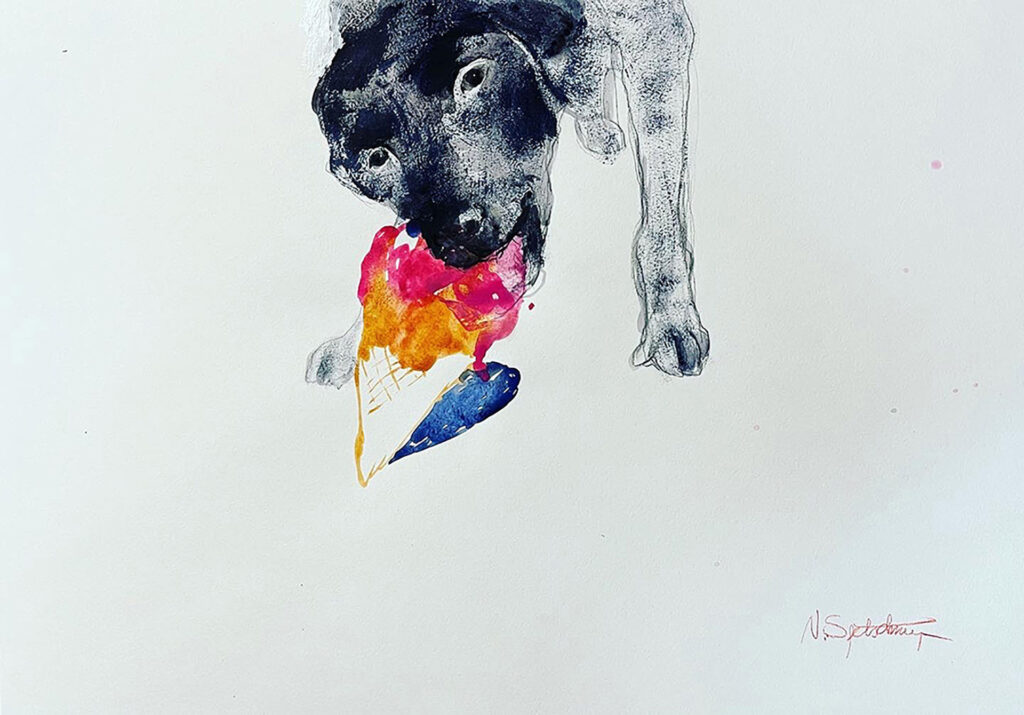
What for you is “taste” and what is “tasteless”?
I think these are self-defined words. Without false modesty, I think I have excellent taste. Tastelessness, unfortunately, is the majority of goods in our country. If we’re talking “not about art,” I’ll pick two categories of astonishing tastelessness: shoes and doors. It is difficult to determine the genesis of this nightmare: maybe it is a consequence of the meeting and simultaneous influence of Europe and Asia. Or it could be supply meeting demand rather than the other way around.
I’d welcome aesthetic censorship, preventing ugly things from being produced. But only if I, for example, am the censor.
If you had the opportunity to instantly master a branch of visual art that you haven’t mastered yet – what would it be?
I don’t even know what direction I would like to master yet. It’s like nothing is hard to master if the need arises.
Video art, maybe?
I’m not really interested in that. I think I just haven’t come across much good video art in my life, with the exception of Bill Viola, of course. So I’m somewhat skeptical of this medium. It seems to me that if you cut out any piece from a Greenaway, Bunuel or Varda movie, you’d have the best video art.
I am still interested in painting as much as possible, it is interesting to experiment with materials. I recently poured silicone onto a canvas painting – it was quite an interesting effect, as if you were looking through milk glass.
Do you have a particular job or series of jobs that has been the hardest for you?
There was a difficult period in 2022 that shook us all up. For two weeks we were all walking around like we had been hit over the head with a bag. In such conditions it is quite difficult to generate and project sane ideas. I was saved by Olya Tobreluts (note the artist): she somehow said so convincingly that we should work, despite the external circumstances, that I involuntarily got up and went. And I created a series of large-format graphics called “Heightened Anxiety”.
Famous American artist Andy Warhol once said: “The only way for an artist to create anything meaningful is to go underground.” Do you think he was right? Do you have periods of slump when you don’t write works, but only accumulate forces for new ones?
I think he was not referring to inactivity, but to creativity outside the frenzied conveyor belt of commercial art. I love deadlines, but I don’t like to give up a painting if I’m not satisfied with it. I need time to refine the piece.
At the same time, I don’t sit around waiting for inspiration and the muse to come. That’s nonsense – only hard work bears fruit. Sometimes you work, you work, but it doesn’t work. And sometimes it comes right away, sometimes at the end of the day. It happens differently with different jobs. But you have to work for results, not wait.
I don’t know about “accumulation of forces”, but of course, after heavy projects, when you work 24/7 for two months, you need to rest. An artist should rest too.
Have you had the experience of participating in art residencies? What does it bring to an artist?
I have just returned from Pacsa Art Residence, a divinely beautiful private residence in Hungary organized by a Russian collector living there. He has managed to create an amazing residence in every way, where he invites good artists – Vitaly Pushnitsky, Crocodile Power, Tasia Korotkova and many others have visited him.
For a month of stay there I worked fruitfully and had a rest as I haven’t rested for many years. The forces “accumulated” for a full charge. I caught a spring there – and the kind that we, unfortunately, do not have: when all the trees are covered with huge flowers of all shades of pink: magnolias, peaches, sakura… At +20 °, when in St. Petersburg was at best 0 °. It’s impossible to convey. Well, and the museums in Budapest and Vienna, of course, added inspiration.
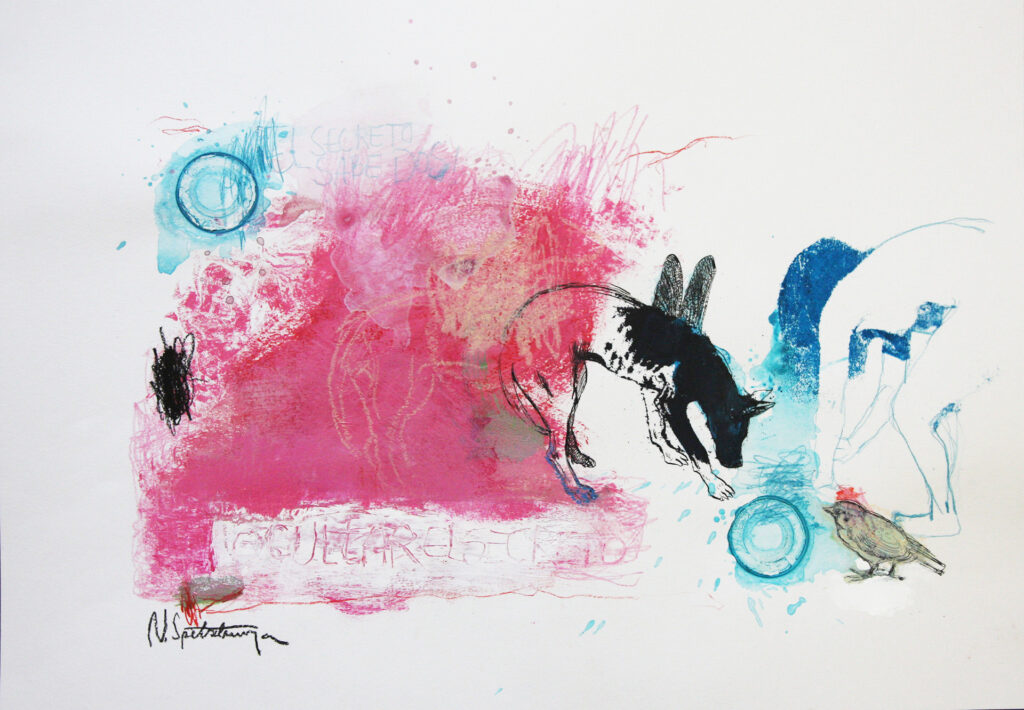
What kind of person is a collector of your art? What does he see for himself in Natalia Spechinskaya’s works?
I have never really thought about it. Perhaps, first of all, my collectors are attracted by color. After all, it is it that sets the first impression – and in my paintings the viewer usually responds to color in the first moments. But in general I have no idea what attracts them.
For many years there has been a debate about the relationship between ‘beauty’ and ‘meaning/concept’ in contemporary art: do you share the view that the depth of a work is not compromised if it is also beautiful?
Try telling a contemporary artist that his work is beautiful. It’s the worst insult you can think of. In this respect, not much has changed since the Bauhaus period (note: Bauhaus was a German architectural and artistic-industrial school that existed from 1919 to 1933 and became a bastion of conceptual understanding of art).
And in general, this is a very complex and subjective question. In my works there is often red color, red undertones. And viewers sometimes say: “Oh, is that blood?! Oh, it’s scary.” But for me personally, these are just spots of color, without direct associations. Just beautiful spots. It’s not for nothing that “red” used to mean “beautiful”.
Interview: Maya Lungul


